In August of 2021, my husband and I left for 6 months of travel through Europe and Asia. We made it to 18 countries on our itinerary, and lived out our dream of traveling the world together! It was amazing, and sometimes it truly feels like a dream to me.
I’m going to detail our eventual 6 month travel itinerary, how long we stayed in each place, how we decided where to visit, and the method that we used to plan our trip.

This post may contain affiliate links. If you use these links to buy something I may earn a commission, at no additional cost to you.
When we left, we did not have a solidified itinerary for the countries we would visit. Armed with a list of potential destinations, we flew to Türkiye as our first stop, and made it up from there!
If you ever decide to do something similar to us (which you totally should), you can use this information to help create your own itinerary!
When we left, many borders were closed or very difficult to get through *ahem thanks virus ahem*, so we stuck mostly to Europe and ended up in Asia at the end of our trip.
But, that being said, we were able to stretch the $30k we had saved in 1.5 years over about 6 months for two people! *in 2021*
The 18 Countries We Visited In 6 Months of Travel
Türkiye – 2 Weeks
İstanbul – İzmir – Selçuk – Ephesus – Pamukkale – Antalya – Cappadocia
Bosnia & Herzegovina – 2 Days
Sarajevo
Croatia – 2 Weeks
Dubrovnik – Trogir – Šibenik – Zagreb
Spain – 15 Days
Mallorca – Soller \ Barcelona – Zaragoza – Bilbao – San Sebastian – Madrid
Italy – 3 Weeks
Naples – Rome – Florence – Montaione – Cinque Terre – Ortisei – Fie allo Sciliar – Venice \ Lake Como – Milan
Vatican City – 1 Day
Slovenia – 4 Days
Ljubljana – Lake Bled
Hungary – 3 Days
Budapest
Czech Republic – 1 Week
Prague – Karlštejn – Cesky Krumlov – Jiřetín pod Jedlovou
Austria – 10 Days
Vienna – Salzburg
Germany – 11 Days
Berchtesgaden \ Cologne – Baden Baden
Ireland – 9 Days
Dublin – Donegal – Galway – Cliffs of Moher – Dingle – Cashel
France – 6 Days
Paris – Blois – Amboise – Le Havre – Étretat
Scotland – 11 Days
Edinburgh – Inverness – Isle of Skye – Fort William – Glencoe – Glasgow
The Netherlands – 3 Days
Amsterdam – Breda
Belgium – 1 Day
Bruges
Switzerland – 8 Days
Chur – Lucerne – Bern – Engelberg
Thailand – 1 Month
Bangkok – Chiang Mai – Koh Phi Phi – Krabi – Khao Sok – Koh Samui – Koh Tao
This list is in chronological order of where we visited on our 6 month travel itinerary, with a few exceptions. We went to Italy, Spain, and Germany twice, but I’ve listed each of those countries based on the first time we visited. I’ve separated the visits to those countries with a \ between locations.
Use my travel guides from the amazing places we’ve been to plan your itinerary!
How We Planned Our 6 Month Travel Itinerary
People always balk when I tell them we only planned the first 2 weeks of our 6 month world trip. And honestly, I can admit it does sound kind of chaotic.
Before we ever left for our trip, we had actually done a ton of planning for our 6 month travel itinerary. Just, not necessarily for our destinations or the daily activities we would do.
Rather, our pre-trip planning was mostly financial in nature (like setting up our Charles Schwab debit card that reimburses us for ATM fees anywhere in the world and racking up credit card points to use for free flights).
Check out my Travel Resources page to find all my favorite planning tools & travel products we love!
The rest of our trip was spent planning as we went.
The planning process on the road looked a little something like this:
We would sit down after a day of exploring and talk about where we wanted to go 5 days from then, do some research about where to stay, what to do, and how to get there.
Then, we would book our flights, trains, cars, hotels, etc. once we knew where we wanted to go.
It really was that simple! Sometimes you need to plan further ahead than that and book tickets for major tourist attractions or popular activities. But, usually you don’t need to plan very far out!
As someone who has dealt with anxiety her whole life, I understand the need to over-plan or be hyper prepared.
But, I will share with you that I felt less anxiety while we traveled than ever before, even when I didn’t know where we would be sleeping the following night. I found some sort of freedom in the flexibility we created.
READ ALSO:
Why We Decided to Quit Our Jobs and Travel
What 6 Months of Travel to 18 Countries Cost Us

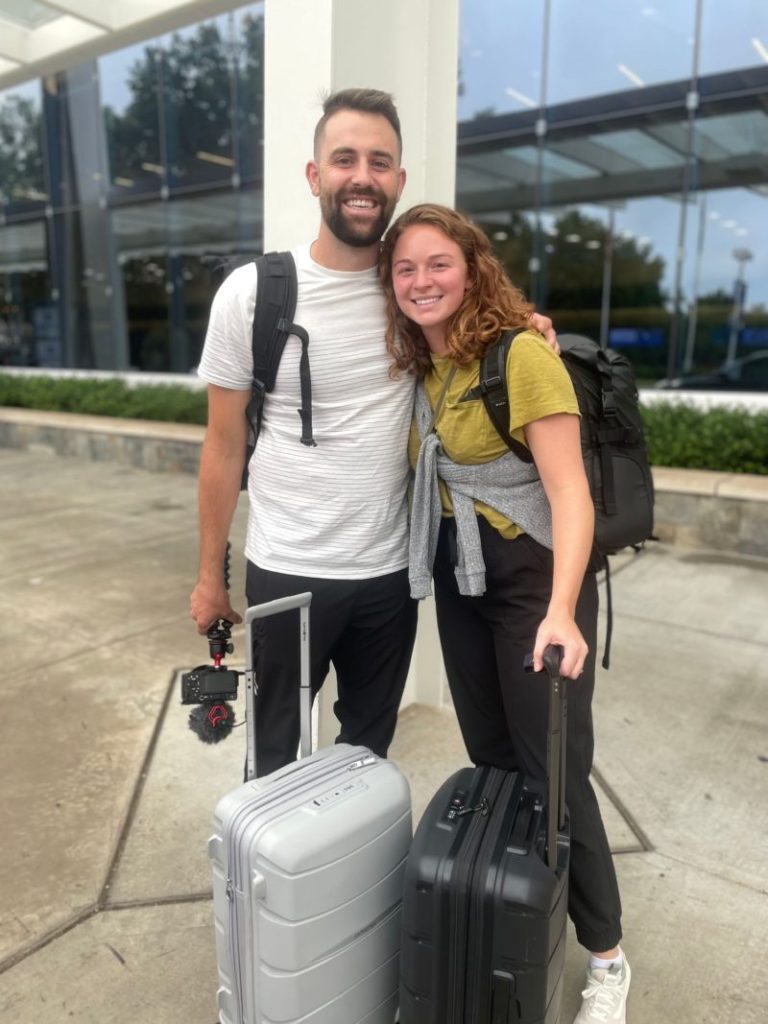
How We Decided Where To Visit On Our 6 Month Travel Itinerary
Most of what drove our decisions of where we would go next was money and convenience.
When we were ready to move on to the next destination, we would look at the map, notice nearby cities or countries, and then look up train or flight prices to get there. Likely, we would choose the cheapest option or the closest one, and go from there!
Budget
Easily the most important factor that determined our 6 month travel itinerary was cost. The cost of transportation, the cost of food, the cost of accommodation, all of it.
We made a spreadsheet pretty early on into our planning where we collected all of our research about what it would cost to visit x country. I ended up putting some pretty estimated costs because it can be pretty hard to tell how much it costs to travel a country based on other people’s stories. Everyone travels differently, so you have to take it all with a grain of salt.
It’s better to overestimate how much it’ll cost to travel long term than to underestimate how much you’ll need.
I put in the estimated daily cost, multiplied by 2, and then multiplied again by the number of days we might want to travel there in order to give us a general idea of how much we might need for 6 months of travel.
This process helped immensely in visualizing the money aspect of our trip. I was able to see how quickly the cost could add up and how being frugal in certain places would save us money and help us to travel for even longer.
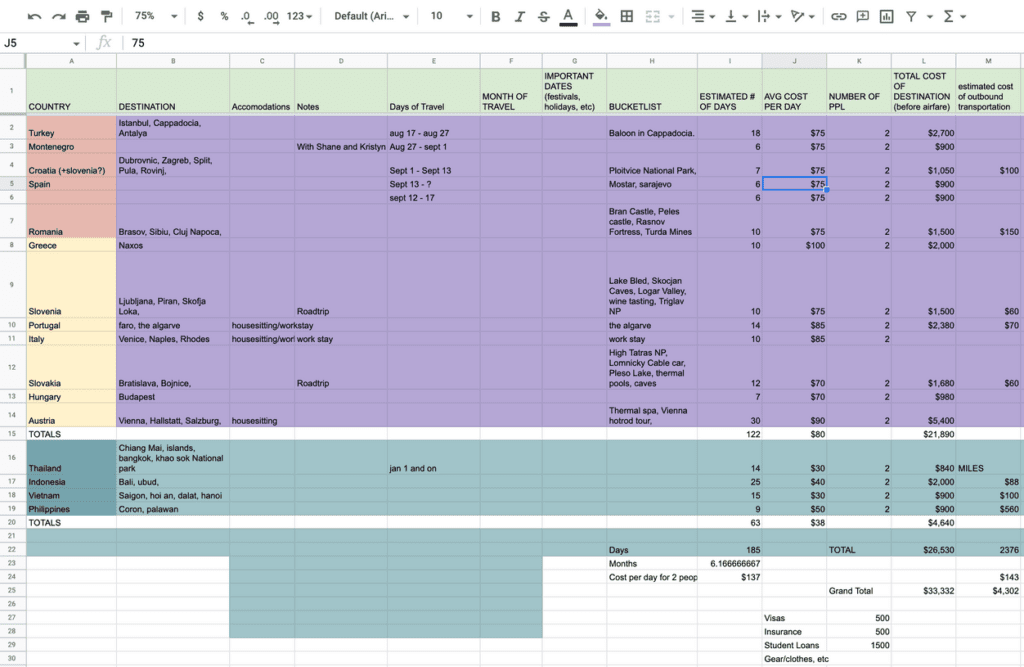
Transportation
We traveled by train to a lot of places, just hopping to the next country over. For example, Slovenia and Hungary share a border, so we took a train from Ljubljana to Budapest.
Traveling by train in Europe is one of the best ways to get around, and is often very cost-effective, too.
My favorite ways to search for available train routes and tickets are Omio and Google Maps.
Sometimes, flights can be very inexpensive, but you just need to look at the itinerary. Most of the time, those €15 flights are a horrible itinerary. Other times, flying was a great option for us, so it just depends.
There were some times that flying was our only option, like when we traveled to Ireland or Scotland.
In other instances, where we traveled to next was determined by our family coming to visit us. We met up with my dad and stepmom in Spain, Colton’s parents in Austria, and my mom, stepdad, and siblings in Switzerland. We planned around those meetups and tried to make it a logical progression of our trip.
Make A Logical Travel Itinerary
You can decide where to go next based on a number of factors, but I believe the easiest way is to approach it logically. Not only will this be the easiest way to plan, it will also probably save you money.
Instead of flying around Europe in a path that resembles a 2 year old’s scribble drawing, travel in one direction and do short hops from one place to another. You’ll spend less time on trains or planes, and more time exploring.
You’ll likely save money by doing this as well, as longer flights tend to cost more, as well as train tickets.
If you’re traveling to multiple continents and doing a full round-the-world trip, the best idea is to decide a travel direction. Like, East to West, or vice versa.
Traveling that way isn’t always possible and sometimes an awesome flight deal can be too good to pass up on, so don’t beat yourself up about it.
It’s just going to make your travel planning that much easier, and will likely be the most cost-effective method of traveling.
Bucket List Points of Interest
Before you ever leave on your trip, have an idea of your must do activities and must see locations to help guide you.
We had a master list of places we were open to visiting, plus some must-do activities, like a hot air balloon in Cappadocia, the thermal baths in Budapest, or the Bernina Express in Switzerland.
Having an idea of what you want to experience on your travels will help guide your decisions about where to travel to!
If you’re looking for some incredible experiences to add to your bucket list, check out these blog posts and our YouTube Channel.
READ ALSO:
Epic One Week Scotland Road Trip Itinerary
A Magical 10 Day Trip to Turkey
How to Get Around The Five Villages of Cinque Terre
The Perfect One Week Slovenia Itinerary: Europe’s Hidden Gem


Climate
If you’re planning to travel long term, you’re likely to run into a few different seasons and climates.
We traveled with these carry-on suitcases, so we initially packed for one season and type of weather: warm. Because of that, we stayed in the Mediterranean climate as long as we could before Fall arrived.
When we met with Colton’s parents in Austria, they brought us a suitcase with our cold weather clothes, and that’s when we made the switch to colder weather.
If we wanted to, we could have designed our trip around chasing the warmer weather, but we knew we wanted to experience Fall and Christmas in Europe.
Not everyone will have people that will come visit and bring them a new wardrobe, but you can purchase clothes along the way and leave other items behind. That’s what we did during the transition season of Fall.
You could also pay to have a family member ship you some clothing items in order to make the change between seasons, but I really think you can find good, cheap clothes in most places abroad, so make the switch that way!
Building an itinerary with the climate and your wardrobe just makes sense, and jumping back and forth between warm and cold just won’t work!
Once we decided we were going to Thailand in January, we sent clothes home with my family at Christmas time, and bought a bunch of clothes in Bangkok!
READ ALSO:
What & How To Pack For Long Term Travel
Packing For One Week In Europe, Summer & Winter
10 Tips to Pack Efficiently in Your Carry-On
10 Essential Items To Pack For A Trip to Europe
How To Get Around While Traveling Full Time
Transportation to, within, and from each country you visit will be different everywhere.
You may fly to one country, then take a train to another. For us, we made those decisions based on price. You may value comfort or convenience more, so you should make your decisions with that in mind.
In Europe, train travel is not only cheap, it’s also easy and efficient. That makes traveling by train one of the very best ways to get around in Europe. We also traveled by ferry, scooter, taxi, and by foot. Planes, trains, and automobiles!
While in Asia, we found that flying is affordable and convenient, and often much more efficient and comfortable than other modes of transportation like buses or trains. That being said, we also traveled by tuktuk, scooter, ferry, van, and taxi.
Apps like Rome2Rio or Omio are super helpful when trying to determine the best way to travel to your next destination. They’ll show you what routes are available, likely cost, and transportation providers to book with.
In Ireland, we decided to rent a campervan, while in Scotland we rented a regular car for our one week Scottish road trip. While in Slovenia, we traveled to Lake Bled on a bus. In Thailand, we took a ferry to Koh Tao. It all just depends on your needs and your budget!
You’ll need to look at how you want to travel and what type of travel is available to you, then make your decision from there.

Plan Ahead Or Make It Up As You Go?
Your greatest asset when traveling for a longer period of time is flexibility.
Now, some people need to have a plan in order to feel secure, and that is totally fine! But, I want to give you some reasons why I think you should not plan your long term trip out entirely before you leave home.
We chose not to set our itinerary before we left for our trip for this reason alone: we wanted the flexibility to change plans if we wanted or needed to.
Imagine you booked a hotel for 5 nights, and about $600 in Barcelona, 6 months from now. You’re currently in Positano, Italy and flights are looking to be $300 one way. For some reason the price of flights has gone way up!
But, you have an ‘appointment’ in Barcelona with that hotel you booked months ago! You have no choice but to spend the $300 a person for your flights, or cancel your booking and not get your $600 back.
If you left your itinerary open, you would be able to take a train to Florence for so much less and get to explore Italy more, then travel on to Barcelona later when it’s cheaper.
This may seem like a trivial example, but that’s just one of the reasons flexibility is important when traveling.
I promise you’ll be able to find a place to stay even if you book at the last minute. There were plenty of days where we didn’t book a hotel for that night until the day of. And it was fun to be so spontaneous!
READ ALSO:
How to Save Money for Travel – Budget & Save for Your Next Trip
Travel Camera Gear – What’s In My Camera Bag | Travel Blogger Edition


Resources To Use For Long Term Travel Planning
Google Drive is my best friend and second brain when it comes to travel planning. I create tons of spreadsheets, dump my chaotic thoughts into Keep, track bookings with Google Calendar, and share all of it with Colton so we can be on the same page.
For flights, I always use Google Flights or Skyscanner to find the best deals. They make it easy to search, and you can even track flight prices on your phone using their apps to keep an eye on the routes you’re interested in.
Travel insurance is a non-negotiable for anyone planning to travel long-term. We use Safetywing when we travel for long periods of time, and used it on our 6 month trip. Making a claim is simple, the price is great, and the coverage is perfect. Plus, it’s a company that has great customer service and really cares about it’s people. Can’t say enough good things about Safetywing!
To book hotels all over the world, use Booking.com. There is no better website that does it all. In Asia, you can also check Agoda, but Booking.com is how we booked all of our accommodations in Thailand. It’s so easy to book a hotel right in the app the day of and have all the information you need right there. For unique accommodations, use Airbnb.
For travel planning, Wanderlog is my favorite website to keep my thoughts organized. You can plan a very in depth trip, or use it to brainstorm ideas and keep them organized. It’s free to use, and there is also an app you can download to your phone.
For transportation planning, use Omio, Rome2Rio, or Google Maps. You can find available itineraries, transportation options, and prices. Plus, Omio and Rome2Rio will show you what types of transportation are available to you from point A to point B, how much it would likely cost, and what provider to book with.
I typically use GetYourGuide or Viator to book amazing experiences all over the world, like our hot air balloon ride in Türikey!
Of course, blogs, YouTube, and TikTok are also fantastic resources for planning and learning about travel!
If you’re planning a 6 month travel itinerary, or longer maybe, drop any thoughts or questions you have in the comments!




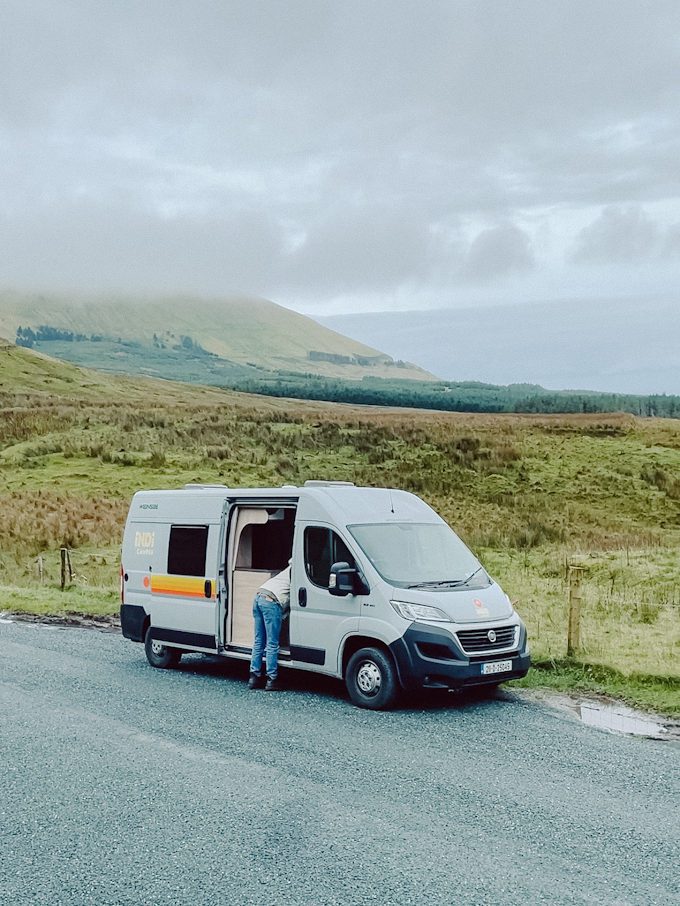



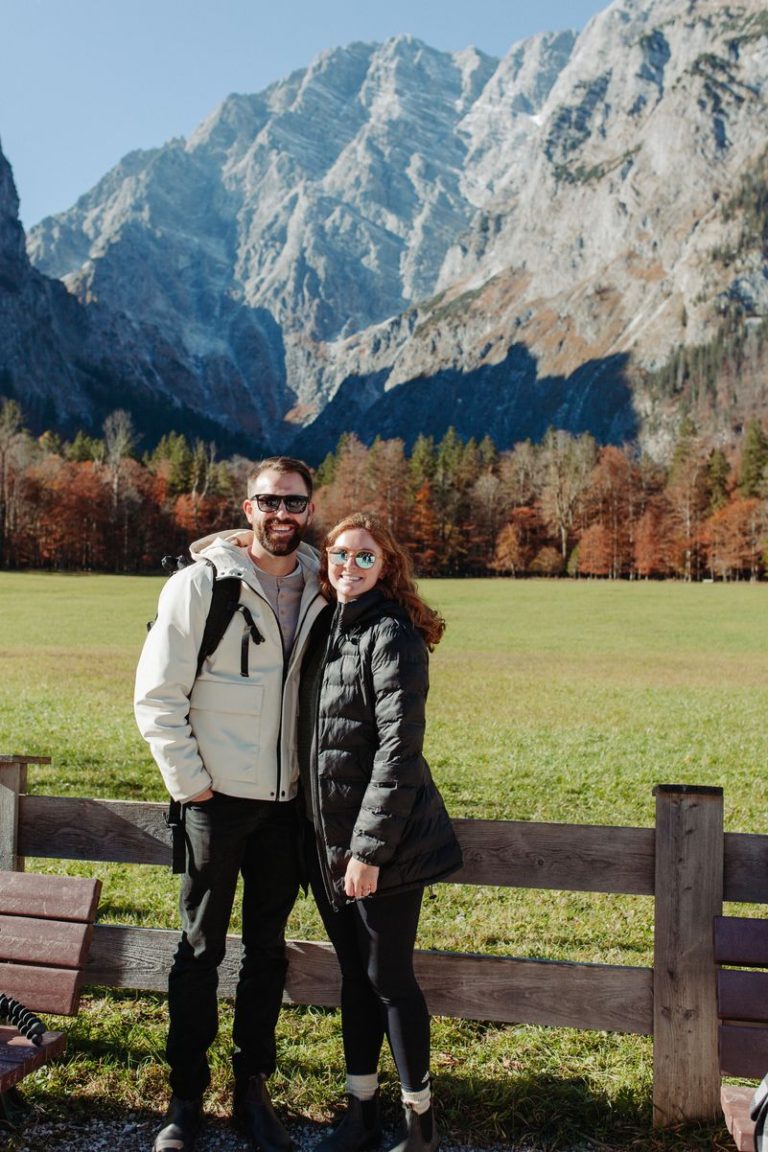
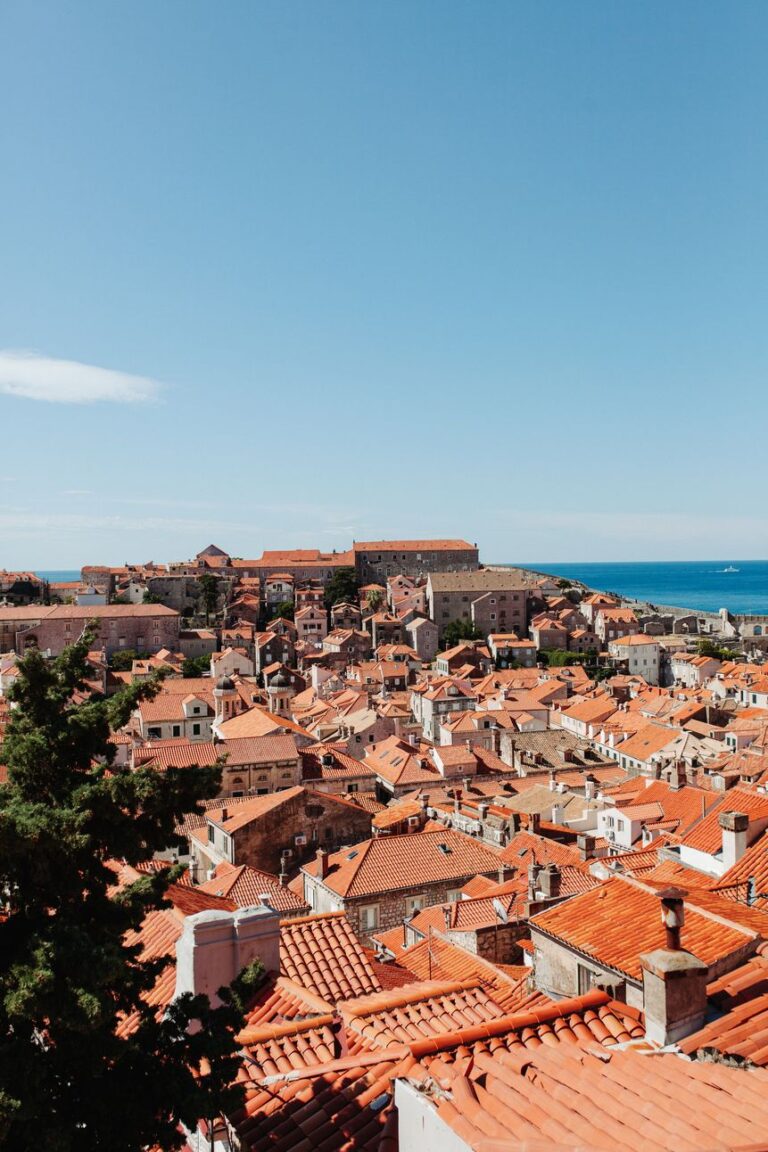
Hi Nikki,
My husband and I are planning to travel to Europe for 6-9 months in around 2 years. We are already planning and talking about what we want to see and do and which countries.
We are torn between actually renting a base flat somewhere (Netherlands or Italy) and then do trips for a day to 3 days to different places.
Or another plan is to have a base for 2 months in three different countries and do our day trips as planned.
What are your thoughts on this sort of planning? We will be (60 and 61 at the time we plan to leave) This way we can also immerse ourselves in a few countries for longer periods.
I would love your thoughts on these ideas.
Hi!
Sounds like an amazing trip you’re planning! I like the idea of having bases as you go that you can travel out from. I think it makes this style of travel much more sustainable. I would think that having ‘regional’ bases would be a good way to do it! That way you aren’t spending a bunch of time backtracking if you are getting further and further away from your one base. Rather, you can go in sections. Sounds amazing! You are also welcome to email me if you’d like to chat about it more at nikki@nikkionherway.com